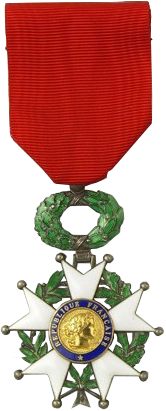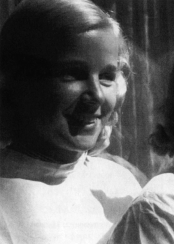Murphy, Audie Leon, born on 20-06-1934 in Kingston, Hunt County, Texas,  to the very poor Irish sharecropper Emmett Berry Murphy and his wife Josie Bell Killian. He grew up on farms near Farmersville and Greenville, Texas, and near Celeste, Texas. He was the sixth of twelve children,
to the very poor Irish sharecropper Emmett Berry Murphy and his wife Josie Bell Killian. He grew up on farms near Farmersville and Greenville, Texas, and near Celeste, Texas. He was the sixth of twelve children,




 two of whom died before reaching adulthood. Emmet and Josie’s children were, in order, Corrine, Charles Emmett “Buck”, Vernon, June, Oneta, Audie Leon, J.W., Richard, Eugene, Nadine, Billie, and Joseph Murphy. Audie attended elementary school in Celeste until his father abandoned the family in 1936. He dropped out in the fifth grade to help support his family. He worked for one dollar per day, plowing and picking cotton on any farm that would hire him. Murphy became very skilled with a rifle, hunting small game like squirrels, rabbits, and birds to help feed the family. One of his favorite hunting companions was neighbor Dial Henley
two of whom died before reaching adulthood. Emmet and Josie’s children were, in order, Corrine, Charles Emmett “Buck”, Vernon, June, Oneta, Audie Leon, J.W., Richard, Eugene, Nadine, Billie, and Joseph Murphy. Audie attended elementary school in Celeste until his father abandoned the family in 1936. He dropped out in the fifth grade to help support his family. He worked for one dollar per day, plowing and picking cotton on any farm that would hire him. Murphy became very skilled with a rifle, hunting small game like squirrels, rabbits, and birds to help feed the family. One of his favorite hunting companions was neighbor Dial Henley  . When Henley commented that Murphy never missed what he shot at, Murphy replied, “Well, Dial, if I don’t hit what I shoot at, my family won’t eat today.” On 23-05-1941, when Murphy was 15, his mother died. Murphy worked at a combination general store, garage and gas station in Greenville. Boarded out, he worked in a radio repair shop. Later that year, with the approval of his older, married sister Corrine, who was unable to help, Murphy placed his three youngest siblings
. When Henley commented that Murphy never missed what he shot at, Murphy replied, “Well, Dial, if I don’t hit what I shoot at, my family won’t eat today.” On 23-05-1941, when Murphy was 15, his mother died. Murphy worked at a combination general store, garage and gas station in Greenville. Boarded out, he worked in a radio repair shop. Later that year, with the approval of his older, married sister Corrine, who was unable to help, Murphy placed his three youngest siblings  in an orphanage to ensure their care. Murphy had long dreamed of joining the military. After the attack on Pearl Harbor on December 7, 1941, Murphy tried to enlist in the military, but the services rejected him because he was underage. In June 1942, shortly after his 17th birthday, his sister Corrine adjusted his birth date so he appeared to be 18 and legally able to enlist. Murphy tried once again to enlist but was turned down by the Marines and the U.S. Army paratroopers because he was too short and underweight at 5 feet 5.5 inches (166.4 cm) and 110 pounds (50 kg). The Navy also turned him down for being underweight. The United States Army finally accepted him and he was inducted at Greenville and sent to Camp Wolters
in an orphanage to ensure their care. Murphy had long dreamed of joining the military. After the attack on Pearl Harbor on December 7, 1941, Murphy tried to enlist in the military, but the services rejected him because he was underage. In June 1942, shortly after his 17th birthday, his sister Corrine adjusted his birth date so he appeared to be 18 and legally able to enlist. Murphy tried once again to enlist but was turned down by the Marines and the U.S. Army paratroopers because he was too short and underweight at 5 feet 5.5 inches (166.4 cm) and 110 pounds (50 kg). The Navy also turned him down for being underweight. The United States Army finally accepted him and he was inducted at Greenville and sent to Camp Wolters  , Texas for basic training. During a session of close order drill, he passed out. His company commander tried to have him transferred to a cook and bakers’ school because of his baby-faced youthfulness, but Murphy insisted on becoming a combat soldier. His wish was granted: after 13 weeks of basic training, he was sent to Fort Meade, Maryland for advanced infantry training. Murphy still had to “fight the system” to get overseas and into action. His persistence paid off, and in early 1943 he was shipped out to Casablanca, Morocco as a replacement in 3rd platoon, Baker Company, 1st Battalion, 15th Infantry Regiment, 3rd Infantry Division
, Texas for basic training. During a session of close order drill, he passed out. His company commander tried to have him transferred to a cook and bakers’ school because of his baby-faced youthfulness, but Murphy insisted on becoming a combat soldier. His wish was granted: after 13 weeks of basic training, he was sent to Fort Meade, Maryland for advanced infantry training. Murphy still had to “fight the system” to get overseas and into action. His persistence paid off, and in early 1943 he was shipped out to Casablanca, Morocco as a replacement in 3rd platoon, Baker Company, 1st Battalion, 15th Infantry Regiment, 3rd Infantry Division  . Another warrior, rifleman of the 3rd Infantry Division was the later also an actor James Arness.
. Another warrior, rifleman of the 3rd Infantry Division was the later also an actor James Arness.


 During their European campaign they had the next causalities, 4.922 were killed in action, and 18.766 wounded with a further 636 who died of wounds. Murphy saw no action in Africa, but instead participated in extensive training maneuvers along with the rest of the 3rd Division. His combat initiation finally came when he took part in the invasion of Sicily on 10-07-1943. Shortly after arriving, Murphy was promoted to corporal after killing two Italian officers as they tried to escape on horseback. He contracted malaria while in Sicily, an illness which put him in the hospital several times during his Army years. During seven weeks of fighting in that campaign in France, Murphy’s division suffered 4.500 casualties. Just weeks later, he received two Silver Stars
During their European campaign they had the next causalities, 4.922 were killed in action, and 18.766 wounded with a further 636 who died of wounds. Murphy saw no action in Africa, but instead participated in extensive training maneuvers along with the rest of the 3rd Division. His combat initiation finally came when he took part in the invasion of Sicily on 10-07-1943. Shortly after arriving, Murphy was promoted to corporal after killing two Italian officers as they tried to escape on horseback. He contracted malaria while in Sicily, an illness which put him in the hospital several times during his Army years. During seven weeks of fighting in that campaign in France, Murphy’s division suffered 4.500 casualties. Just weeks later, he received two Silver Stars ![]()
![]() for further heroic actions.
for further heroic actions.

 and the Distinquished Medal by General John O’ Daniel.
and the Distinquished Medal by General John O’ Daniel. 
 Murphy, by now a staff sergeant and holding the position of Platoon Sergeant, was eventually awarded a battlefield commission to second lieutenant, which elevated him to the Platoon Leader position. He was wounded in the hip by a sniper’s ricocheting bullet 12 days after the promotion and spent ten weeks recuperating. Within days of returning to his unit, and still bandaged, he became company commander, 25-01-1945 and suffered further wounds from a mortar round which killed two others nearby in the battle at Holtzwihr, France. After fighting for some time, Murphy’s unit was reduced to an effective strength of 19 out of 128. Murphy sent all of the remaining men to the rear while he shot at the Germans until he ran out of ammunition. He then climbed aboard an abandoned, burning tank destroyer and used its .50 caliber machine gun to cut down the German infantry, including one full squad of German infantry who crawled in a ditch to within 100 feet (30 m) of his position. He was able to call in artillery fire using a land-line telephone and, under heavy fire, was wounded in the leg. He nonetheless continued his nearly single-handed battle for almost an hour.
Murphy, by now a staff sergeant and holding the position of Platoon Sergeant, was eventually awarded a battlefield commission to second lieutenant, which elevated him to the Platoon Leader position. He was wounded in the hip by a sniper’s ricocheting bullet 12 days after the promotion and spent ten weeks recuperating. Within days of returning to his unit, and still bandaged, he became company commander, 25-01-1945 and suffered further wounds from a mortar round which killed two others nearby in the battle at Holtzwihr, France. After fighting for some time, Murphy’s unit was reduced to an effective strength of 19 out of 128. Murphy sent all of the remaining men to the rear while he shot at the Germans until he ran out of ammunition. He then climbed aboard an abandoned, burning tank destroyer and used its .50 caliber machine gun to cut down the German infantry, including one full squad of German infantry who crawled in a ditch to within 100 feet (30 m) of his position. He was able to call in artillery fire using a land-line telephone and, under heavy fire, was wounded in the leg. He nonetheless continued his nearly single-handed battle for almost an hour. He only stopped fighting when his telephone line to the artillery fire direction center was cut by enemy artillery. As his remaining men moved forward, he quickly organized them into a counter-attack which ultimately drove the enemy from Holtzwihr. For these actions, Murphy was awarded the Medal of Honor.
He only stopped fighting when his telephone line to the artillery fire direction center was cut by enemy artillery. As his remaining men moved forward, he quickly organized them into a counter-attack which ultimately drove the enemy from Holtzwihr. For these actions, Murphy was awarded the Medal of Honor.

 When asked after the war why he had seized the machine gun and taken on an entire company of German infantry, he replied simply, “They were killing my friends.” In early June 1945, one month after Germany’s surrender, he returned from Europe to a hero’s welcome in his home state of Texas, where he was feted with parades, banquets, and speeches. Murphy was discharged from active duty with the U.S. Army as a First Lieutenant, at Fort Sam Houston in San Antonio, Texas on 17-08-1945, and discharged from the U.S. Army on 21-09-1945.
When asked after the war why he had seized the machine gun and taken on an entire company of German infantry, he replied simply, “They were killing my friends.” In early June 1945, one month after Germany’s surrender, he returned from Europe to a hero’s welcome in his home state of Texas, where he was feted with parades, banquets, and speeches. Murphy was discharged from active duty with the U.S. Army as a First Lieutenant, at Fort Sam Houston in San Antonio, Texas on 17-08-1945, and discharged from the U.S. Army on 21-09-1945.
Back home, Murphy enjoyed a 21-year acting career. He played himself in the 1955 autobiographical To Hell and Back  , based on his 1949 memoirs of the same name, but most of his films
, based on his 1949 memoirs of the same name, but most of his films

 were westerns . He made guest appearances on celebrity television shows and starred in the series Whispering Smith. Murphy was a fairly accomplished songwriter, and bred quarter horses in California and Arizona, becoming a regular participant in horse racing.
were westerns . He made guest appearances on celebrity television shows and starred in the series Whispering Smith. Murphy was a fairly accomplished songwriter, and bred quarter horses in California and Arizona, becoming a regular participant in horse racing.
Suffering from what would today be termed posttraumatic stress disorder (PTSD), he slept with a loaded handgun under his pillow and looked for solace in addictive sleeping pills. In the last few years of his life he was plagued by money problems, but refused offers to appear in alcohol and cigarette commercials because he did not want to set a bad example.



 Murphy was married with actress Wanda Hendrix
Murphy was married with actress Wanda Hendrix


 on 08-01-1949, and their divorce became final on April 11-04-1951. He married former airline stewardess Pamela Archer on 23-04-1951
on 08-01-1949, and their divorce became final on April 11-04-1951. He married former airline stewardess Pamela Archer on 23-04-1951 
 . Son Terrance Michael “Terry” Murphy was born in 1952. Son James Shannon “Skipper” Murphy was born in 1954.
. Son Terrance Michael “Terry” Murphy was born in 1952. Son James Shannon “Skipper” Murphy was born in 1954.


 Wanda Hendrix died age 52, ten years after Audi, on 01-02-1981, in California.
Wanda Hendrix died age 52, ten years after Audi, on 01-02-1981, in California.
Death and burial ground of Murphy, Audie Leon.
Shortly after noon on 28-05-1971, age 46, during Memorial Day weekend, Murphy the actor was killed when his private plane crashed into Brush Mountain, near Catawba, Virginia, 20 miles west of Roanoke, in conditions of rain, clouds, fog and zero visibility

 The pilot and four other passengers were also killed. Murphy is buried on Arlington Cemetery, Section 46.
The pilot and four other passengers were also killed. Murphy is buried on Arlington Cemetery, Section 46.



Monument at the site of the plane crash in which Audie Murphy died.
Message(s), tips or interesting graves for the webmaster: robhopmans@outlook.com
























Leave a Reply